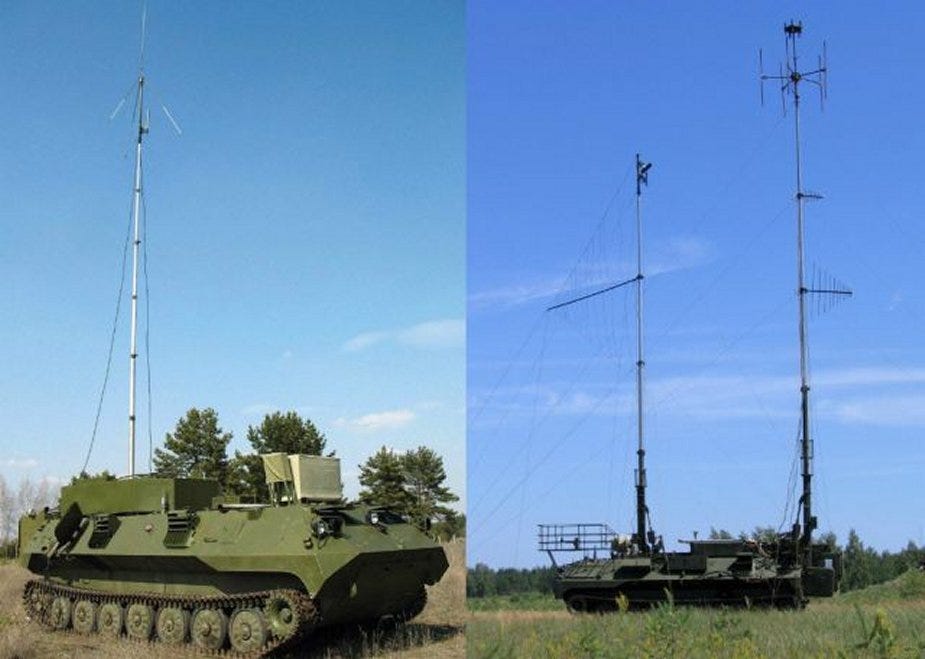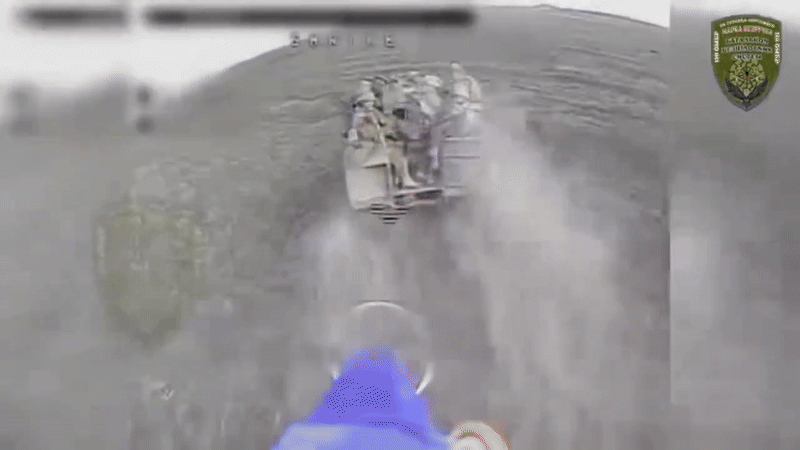Isn't It Ironic? Ukrainian Drones, Probably Guided by GPS, Blew Up 2 Russian GPS-Jammers.
The Borisoglebsk-2 jamming complex can block satellite radio signals.
Russian radio-jammers are throwing off the satellite navigation that guides Ukraine’s best drones and munitions. So the Ukrainians are hunting the jammers—with satellite-guided drones, it seems.
The jamming and the campaign against it underscore the benefits and limitations of electronic warfare in Ukraine. Jamming works … until it doesn’t.
On or just before, drones from Ukrainian ground forces’ southern joint task force located and bombed two vehicles belonging to one or more Russian Borisoglebsk-2 jamming complexes. The drones seem to have been GPS-guided bomber models.
Each $100-million Borisoglebsk-2 consists of a command post and four electronic warfare systems mounted on nine MT-LBu armored tractors. The Borisoglebsk-2, developed in the 2000s and first deployed in 2015, “has an extended frequency range of radio intelligence and electronic jamming,” according to the U.S. Army’s Training and Doctrine Command.
The southern joint task force described the destroyed vehicles as “expensive.”
GPS-blocker
A Borisoglebsk-2 generates radio noise that can disrupt satellite phones, drone command signals and GPS navigation. GPS jamming by both sides of Russia’s wider war on Ukraine has recently blunted the effects of precision-guided glide bombs. The Russians “have brought in new electronic warfare equipment,” one Ukrainian military blogger noted. “They can really interfere with a strike.”
“The GPS of the bombs can go out,” the blogger added.
Destroying the jammers disrupts the disruption. It’s not for no reason that Russian E.W. systems are top targets of Ukrainian drone raids and deep strikes. In 38 months of hard fighting, the Ukrainians have destroyed, damaged or captured around 90 jamming systems that the analysts at Oryx have visually identified. Russian losses include a couple dozen systems associated with Borisoglebsk-2 complexes.
Most dramatically, a Ukrainian agent traveled 300 miles across Russia to plant a bomber under a Russian drone-jammer protecting strategic sites in Moscow. “The explosive device destroyed two Russian Valdai radar systems designed for 24-hour automatic detection and counteraction of UAVs,” the intelligence directorate in Kyiv claimed.
Ironically, many of the Ukrainian attacks on Russian jammers have involved the very kinds of systems the Russians were trying to jam. Drones striking drone-jammers. GPS-guided bombs blowing up GPS-jammers. These ironic strikes are reminders that electronic warfare is difficult, imprecise and vulnerable to counterattack.
Especially Russian electronic warfare. Russian raids have knocked out or captured fewer than 10 Ukrainian jammers that Oryx has been able to identify. The greater number of jammers in Russian service probably only partially explains the heavier Russian losses.
Read more:
A Single Ukrainian Drone Killed 10 Russians Riding In An Unprotected Truck. That Kind of Thing Is Normal Now.
To understand why, and how, Russia is losing so many people in Ukraine, observe what happened when an apparent Russian reconnaissance group probed Ukrainian lines around the ruins of Toretsk in eastern Ukraine in recent days.








Ukrainians seem pretty good at finding Russian emitters. Fun thing about jamming stations in the field is that you have to jump them constantly because they constantly announce their locations. You need at least two for operations because one always covers the other during movement. So either Ukrainian EW teams are exhausting themselves, or I guess Russians have lost the art of radio direction-finding.